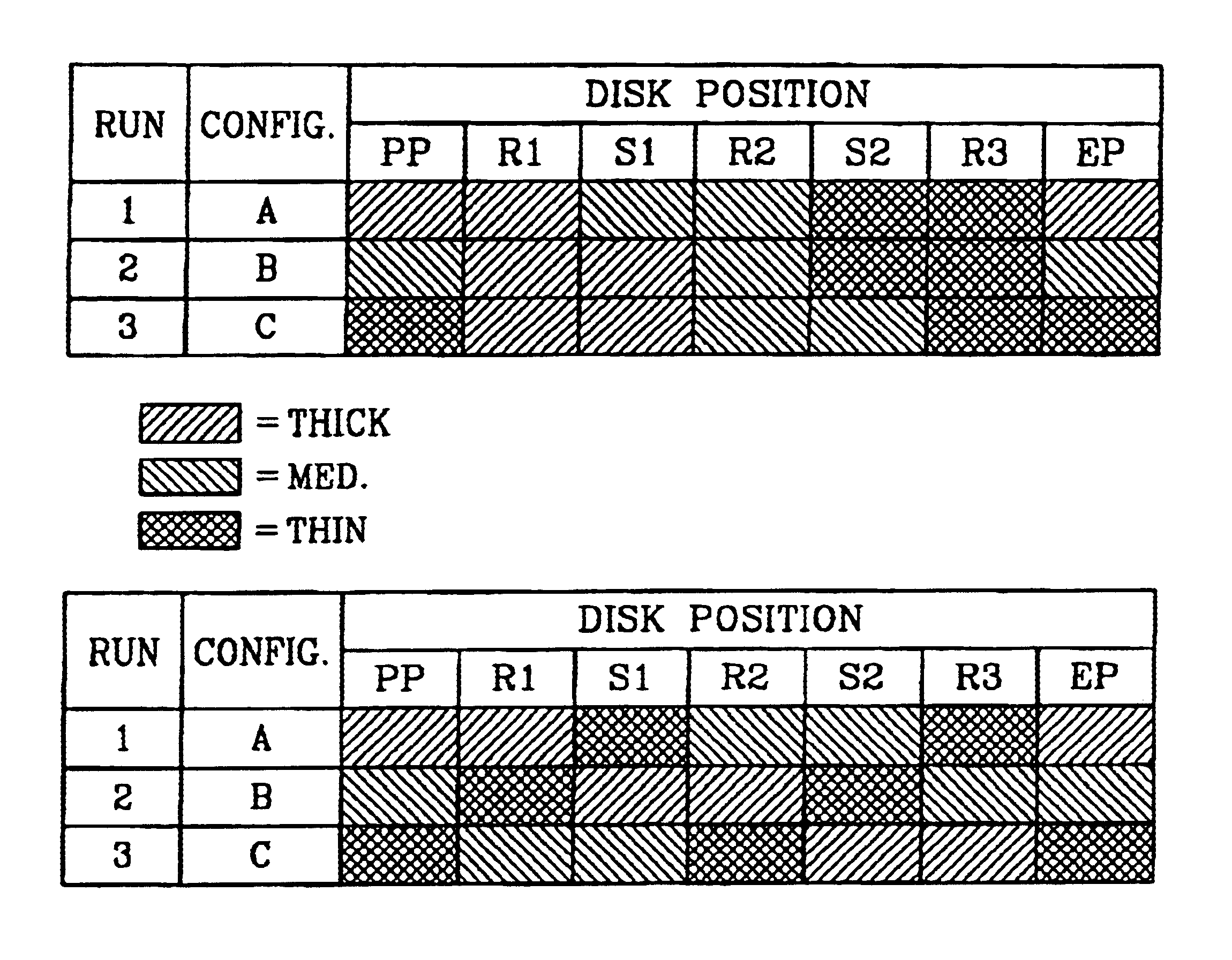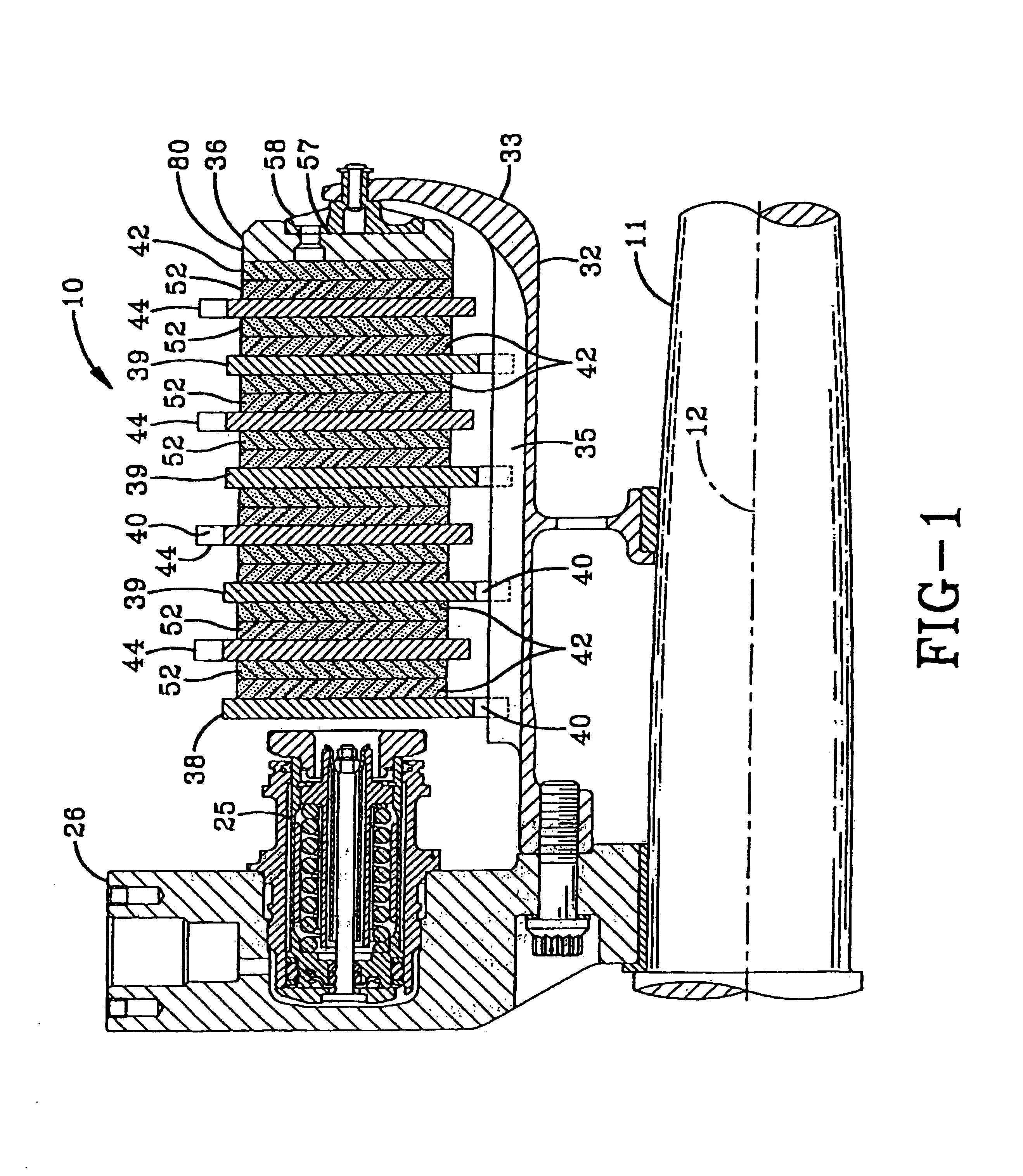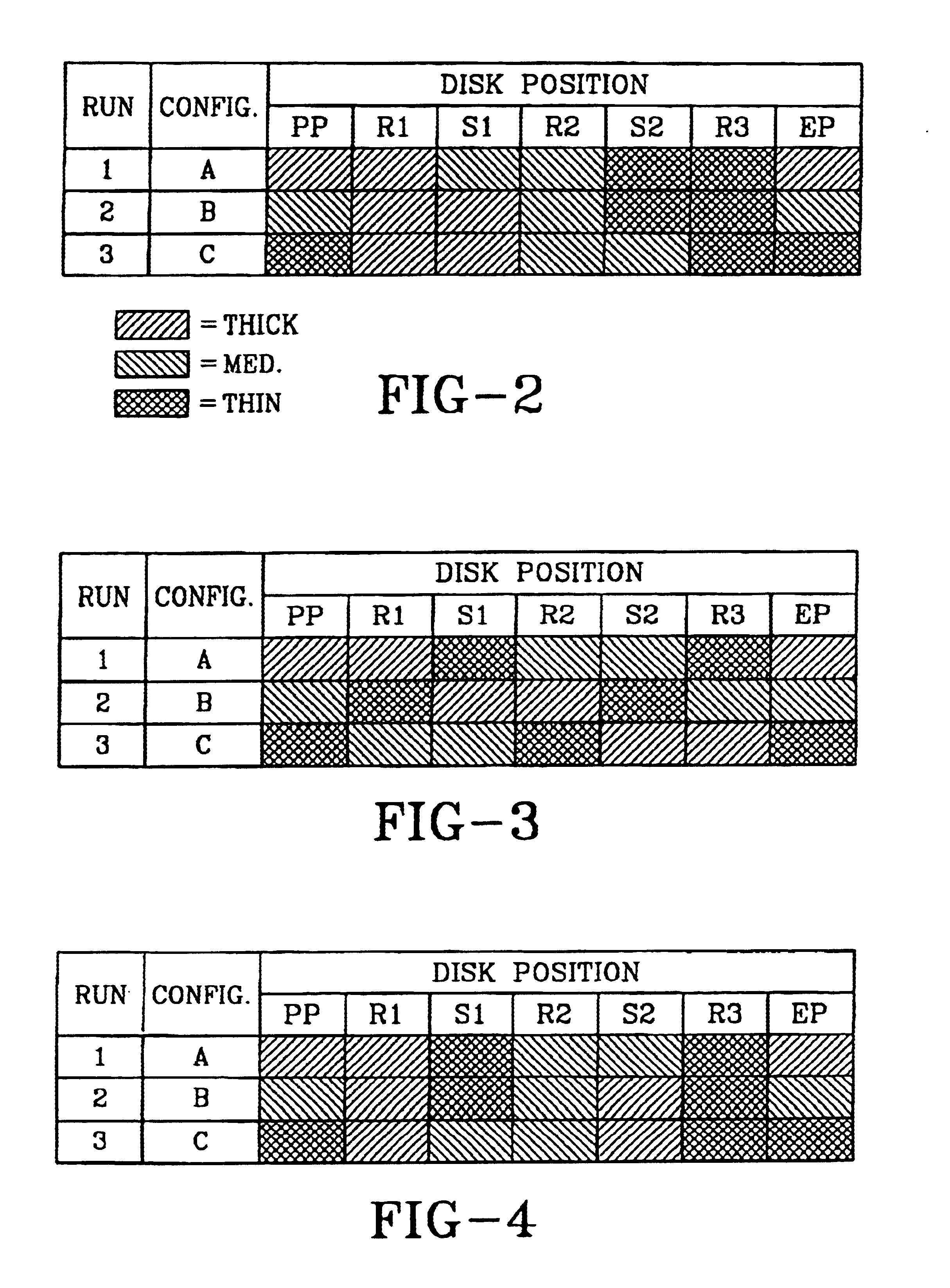Three run disk brake stack and method of assembly
a disk brake and three-run technology, applied in the field of multi-disk brake systems and aircraft disk brake systems, can solve the problems of limited thickness of available wear parts, and achieve the effects of increasing the longevity of individual disks, cost savings, and additional design flexibility
- Summary
- Abstract
- Description
- Claims
- Application Information
AI Technical Summary
Benefits of technology
Problems solved by technology
Method used
Image
Examples
Embodiment Construction
[0028]A friction brake mechanism 10 mounted on axle 11 for use with a cylindrical wheel rotatable about axial centerline 12 in a manner fully described in U.S. Pat. No. 4,018,082 to Rastogi et al., U.S. Pat. No. 4,878,563 to Baden et al., and U.S. Pat. No. 5,248,013 to Hogue et al. is shown in FIG. 1. The friction brake mechanism 10 includes a pressure plate 38 adjacent a thrust member, preferably a hydraulic piston 25, an end plate 36 distal from the pressure plate, and a plurality of interleaved rotor disks 44 and stator disks 39 which together form the brake heat sink or brake stack disposed therebetween. The friction brake mechanism 10 also includes a torque tube 32 on which the pressure plate 38, and stator disks 39 are slidably mounted against rotation relative to the wheel and rotor disks 44. End plate 36 is also mounted against rotation relative to the wheel and rotor disks.
[0029]Torque tube 32 includes a reaction plate 33 at its end, distal the thrust member piston 25. The ...
PUM
 Login to View More
Login to View More Abstract
Description
Claims
Application Information
 Login to View More
Login to View More - R&D
- Intellectual Property
- Life Sciences
- Materials
- Tech Scout
- Unparalleled Data Quality
- Higher Quality Content
- 60% Fewer Hallucinations
Browse by: Latest US Patents, China's latest patents, Technical Efficacy Thesaurus, Application Domain, Technology Topic, Popular Technical Reports.
© 2025 PatSnap. All rights reserved.Legal|Privacy policy|Modern Slavery Act Transparency Statement|Sitemap|About US| Contact US: help@patsnap.com



